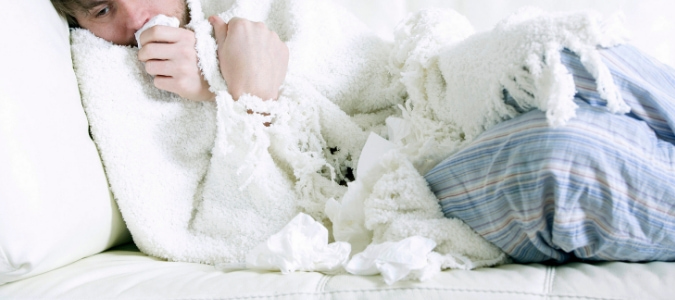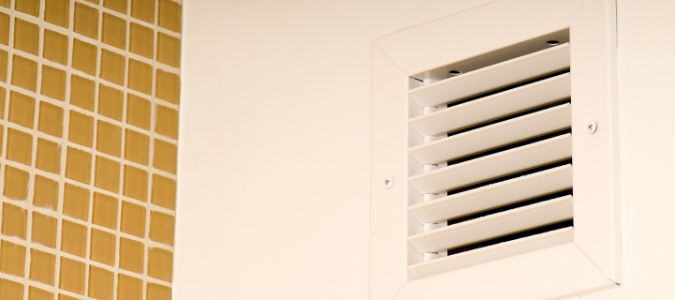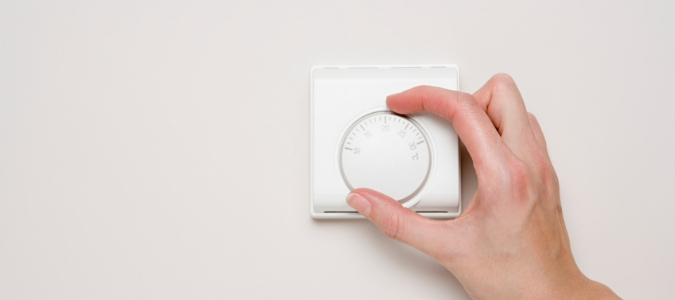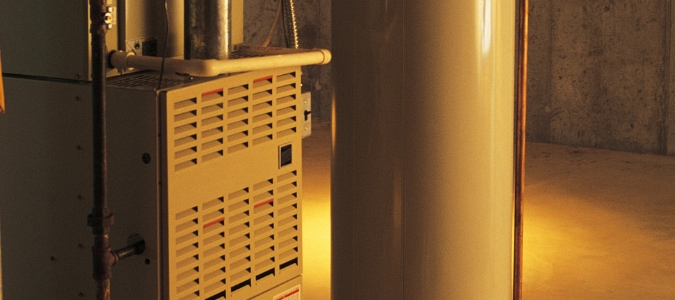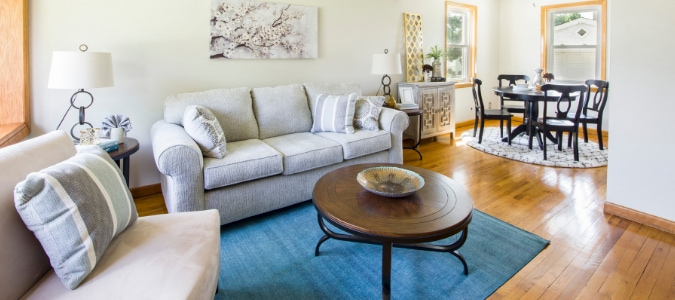
When the cooler temperatures finally stuck around, you were thrilled.
Finally, those of us who live in warmer parts of the United States wouldn’t have to sweat just stepping out of our cars. We are happy to give our air conditioners a break. On a related note, we can also get a vacation from higher than normal utility bills—at least for a few months.
Then it happened: you woke up in the middle of the night shivering. Well, this was certainly new, and not a welcome development.
Your immediate assumption was that somehow your AC system never switched from “cool” to “heat.” Unfortunately, when you checked you discovered this wasn’t the case.
Your thermostat was set to 70 degrees inside, but the actual temperature was all the way down to 65. For some reason, the heat just wasn’t working.
By why? You barely run the heat most of the year, so why would it die on you now?
Experienced HVAC professionals deal with these types of issues pretty frequently. When homeowners call, questions tend to follow a similar pattern: “What reason could my heating system possibly have to give out? Shouldn’t it be ‘fresh’ or something?”
The truth is that there many different reasons why a central heating system might fail. When this happens, not only will your home not be adequately warmed, but also the safety of your property could be compromised.
In this post, we’re going to take a look at what might be making your central heater not work to help you understand what issue you might be dealing with.
A word to the wise, though. Where HVAC systems are concerned, you’re almost always better off reaching out to a knowledgeable professional.
Heater Not Blowing Hot Air In House: Possible Problems
Few things are more frustrating than waking up to a cold house, especially when your heat is supposedly on and you can hear the system working. This means that not only is the heater not doing its job and actually making your home warm, but also that it’s running continually in an attempt to do it.
What kinds of issues could cause this problem?
If you’re not exactly timely with replacing your air filters, the lack of airflow caused by the buildup of dust and debris can result in the main limit switch essentially turning off the heat. Unfortunately, if this has already happened, simply replacing your filters often isn’t enough.
Why is that? While the switch turns off the actual heat, the heater will keep trying to warm your house, since the temperature inside still reads as cold. This creates a problematic cycle where the system basically tries to heat, reads as too hot, shuts down, then tries again. Eventually, this can cause your main limit switch to get “stuck,” which may require it to be replaced.
These are not the only problems, but once you move beyond these relatively simple issues, it’s really in your best interest to have a technician look at the system.
Why Is There No Heat In My House?
If you’re experiencing no heat in your house, there are a few simple things you can try before you call in a professional. First, check your thermostat. While this may sound silly, thermostats can sometimes get switched from HEAT to COOL when kids are playing or when you’re cleaning.
If that doesn’t seem to be the issue, set your thermostat to five degrees warmer than it currently is in your home. Sometimes, not everyone in the house agrees to what temperature the thermostat should be set to and the thermostat can be set to a lower temperature than you were hoping for. Also, if it’s the first really cold day of the season, sometimes the furnace isn’t set high enough to make it feel warm in your home.
Lastly, if you have a newer thermostat, check to make sure it’s not on a timer. Some of the newer thermostats can be programmed to turn on and off at certain points of the day. If someone has been messing with the thermostat they can accidentally turn your automatically programmed times off, or potentially set new programmed times.
If you’re wondering why your house is still cold after adjusting your thermostat, you could have a bigger problem on your hands—there could be cold air blowing out of your vents. Some of the typical causes things that cause central heat systems to produce cold air include:
- Temperature control problems
- Heat production defects
- Impaired heat distribution systems
Let’s explore each of these problems in more detail.
Heater Blowing Cold Air In House Due to Temperature Control Problems
The reason your heater is blowing cold air could be because the thermostat is faulty.
The thermostat is a principal regulator of how your heater works. If the set temperature is not correct and too low, the heater may blow in air that’s colder than expected.
What can you do to remedy this problem? Take the following steps to get your home feeling comfortable again:
- If the thermostat uses batteries, check to see if they need to be replaced.
- Try resetting the thermostat per the manufacturer’s guidelines.
- If none of the above works, install a replacement thermostat.
After checking the basics and attempting to reset the thermostat, savvy homeowners will call in a professional before investing in a thermostat to confirm that the thermostat cannot be repaired or to troubleshoot the problem.
Another critical control component of a home’s central heat system is the circuitry that supports the system.
To deal with this potential issue, you will need to:
- Open the circuit breaker panel.
- Identify the breaker switch for the heater system.
- Make sure the breaker switch is in the “on” position.
- Look for any burnt fuses that require replacing.
If it’s not the temperature control system that is the problem, the next step is to determine whether it’s your HVAC system that’s not heating your air properly.
Central Heat Blowing Cold Air Due To Defects In Heat Production
Another reason why your house is cold could be that the furnace or heating element is producing no heat. Why might this happen?
In some cases, the furnace or heating element could be turned off. To discover if this is the issue and fix it:
- Look for an on/off switch. This often looks like a light switch on or near the unit.
- Flip the switch off and then flip it back on.
If that doesn’t work, the issue might be that the system might be out of fuel. To troubleshoot this problem:
- Check to see that your central heating system is receiving an adequate supply of the appropriate fuel (gas, oil, LP or electricity).
- If a utility company supplies the fuel, call the company and find out if there’s an interruption, outage or a problem with your account.
Yet another heating problem could be that fuel might not be getting into the furnace or heating element. To find out if this is the issue, and to resolve it:
- If your system uses gas, look for a gas control valve near the furnace or heating element.
- Turn the gas control valve counterclockwise. If it doesn’t turn, the gas is turned off.
- Turn the gas control valve clockwise to allow gas flow into the furnace.
- Look for a similar gas control valve near the gas meter and ensure that gas is being allowed to flow into the system.
Keep in mind that dealing with gas and electricity around the home can be dangerous. Bring in a qualified technician to check your system for leaks, to check for any fire hazards and to make sure your system is working efficiently if there seems to be a problem.
If you have ruled out the problems we have already mentioned, it could be that your furnace or heating element might have ignition problems. To see if this might be what is going on, try the following:
- If your central heating unit uses a pilot light to ignite the furnace, check to see that pilot light works as it should.
- To assess your pilot light, see if the flame is clear blue and doesn’t flicker.
- If the pilot light needs cleaning, turn off the gas flow by shutting the gas control valve. Shut off the system at the thermostat as well.
- Clean the gas release holes with a small wire brush.
- Blow away any debris that you might see. A hand-held vacuum cleaner may help perform this task.
- Newer systems have electronic ignition systems that have sensors that light up the furnace once it’s switched on. Sometimes these sensors get dirty or damaged. Dirty sensors need cleaning, while damaged sensors must be replaced.
The furnace itself might be dirty. With time, dirt, dust and other debris may build up in the furnace or heating element. A dirty furnace may result in the operation being so compromised that the furnace fails to produce enough heat to warm up your house adequately. If that’s the case, you’ll need to:
- Unplug the furnace and inspect it for dirt, dust or blockage.
- Clean it, according to the manufacturer recommendations.
You might have mold in your furnace that is impacting your heater’s ability to keep your home comfortable. Poor insulation or defective ductwork may lead to an accumulation of moisture and subsequent mold growth in the furnace or heating element. To see if this is your issue, you’ll want to:
- Unplug the furnace and inspect it for evidence of mold.
- Call in an expert to safely clean off any mold present.
- The professional should also take extra steps to prevent future mold growth.
If you’ve made it through all these steps, we’re impressed! Remember when we mentioned that a variety of issues can cause a heater to not work properly? Your issue could be how your heating system is circulating warm air in your home.
Central Heat Blowing Cold Air Due To Impaired Heat Distribution Systems
If your heating system’s temperature controls are working and warm air is being produced, it could be that your system is not moving the warm air to all your rooms. There are a few common culprits for distribution problems.
A Blocked Outdoor Air Conditioning Unit
Some central heating systems have outdoor components. Check on these components and clear away any debris, leaves, branches, dirt and so on that might be hindering air flow into the system which could cause it to malfunction.
Dirty Air Filters
The air filters in a central heating system may become dirty because of excessive dust in house or deterioration over time. When this happens, your filters can inhibit maximal heater performance and blow cold air into your house. Dirty filters need to be cleaned, while damaged filters should be changed. Hiring a professional is the best way to clean and replace central heating filters.
Malfunctioning Electric Blower
The blower in your furnace pushes hot air into your home. If your blower malfunctions, your system might begin blowing cold air into your house. To diagnose this problem, check the integrity of your blower motors. Some blowers are belt-driven, so if you are having a problem, you may need to replace your belt if it has become cracked and loses its tension.
Leaky Ductwork
In some cases, leaking ductwork can be the culprit if your system is unable to move hot air to warm living spaces. Contact an HVAC expert when you suspect leakages to seal off and insulate any leaking ducts.
ABC Can Diagnose And Resolve Your Heating Issues
The information we’ve provided here is merely meant to illustrate some of the problems that commonly affect central heating systems. There are other potential issues, and the best way to learn what’s really going on with your system is to have a knowledgeable professional look at it. The HVAC repair professionals at ABC will not only be able to explain what problem you’re having with your central heating system, but they also have the tools and experience to fix it right the first time. Avoid the hassle and time spent with a DIY approach and call in the experts to get your system up and runing quickly.
